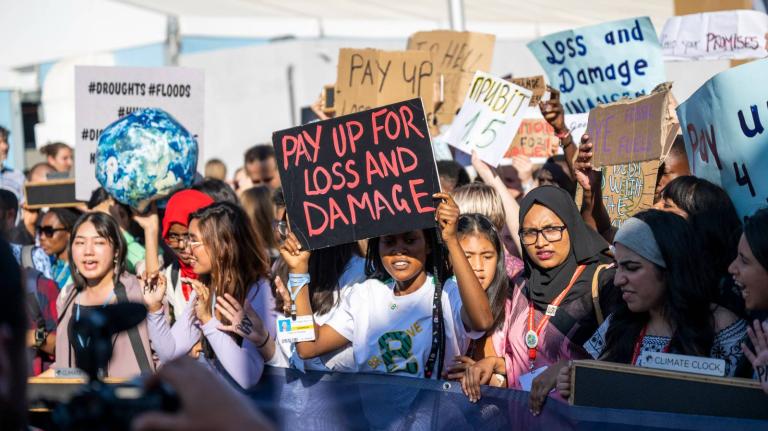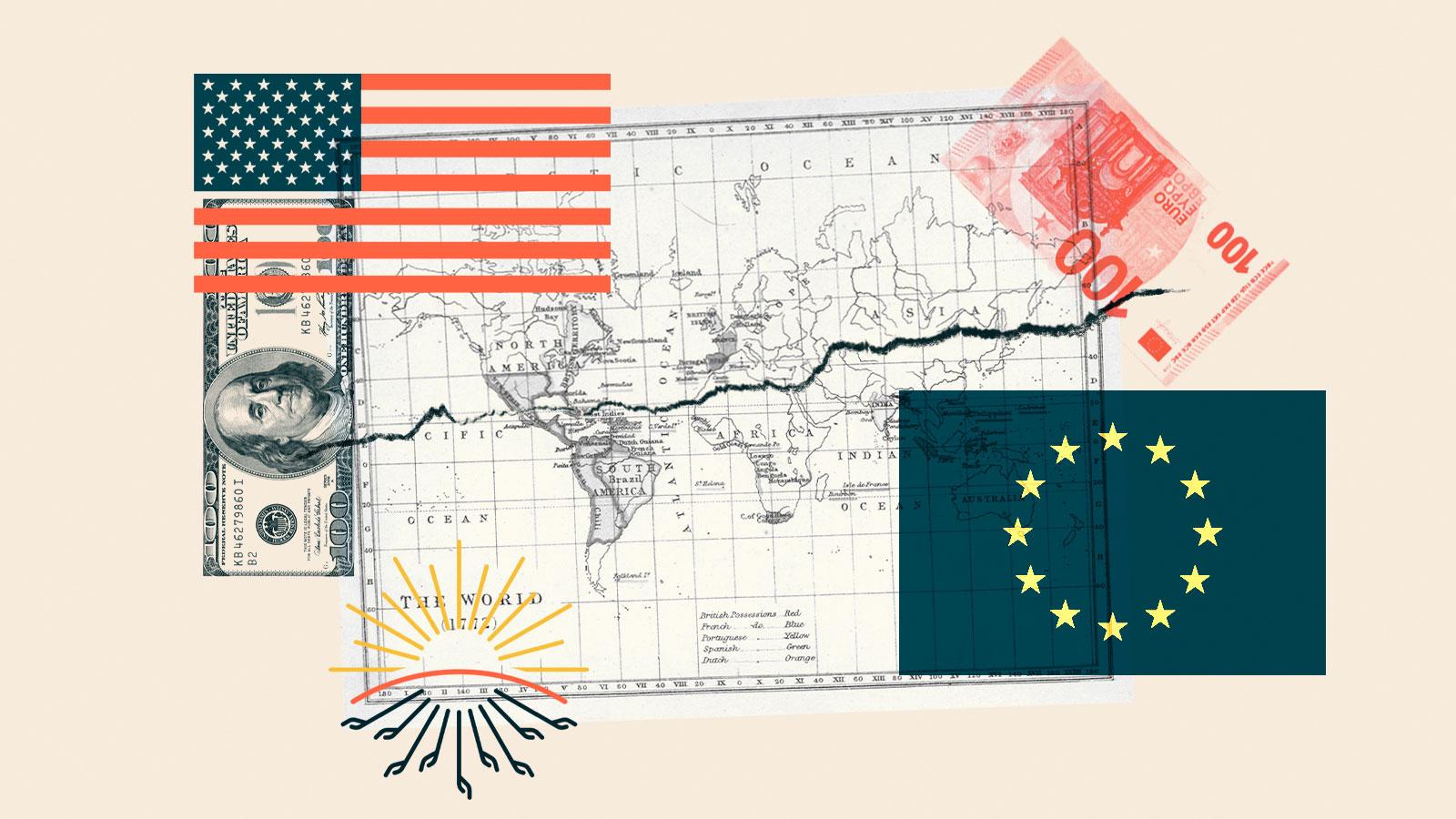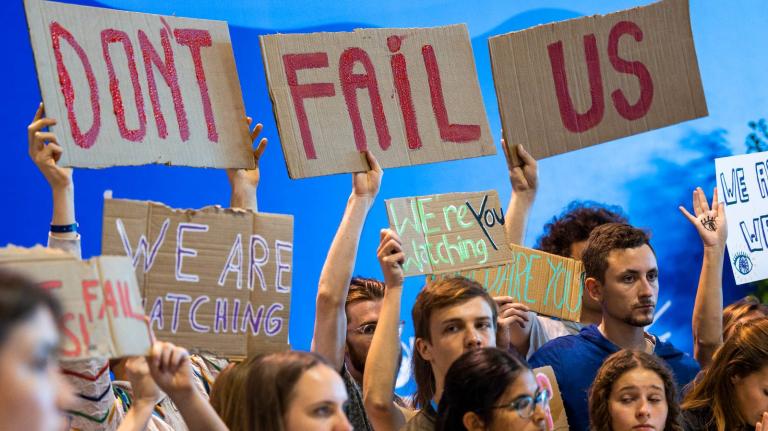For more than three decades, the developing world has demanded that wealthy countries pay up for the “loss and damage” that vulnerable nations are already experiencing due to climate change. Those calls were finally met early Sunday morning when the 27th United Nations climate change conference, or COP27, came to a close in Sharm el-Sheikh, Egypt.
A new global pact establishes a fund “for responding to loss and damage” and creates a transitional committee to work out who will contribute to the fund, which developing countries will be eligible to draw from it, and how it will be governed. Negotiators for developing countries and nonprofits cheered the decision, noting that it was long overdue.
“It’s a historic moment,” Nabeel Munir, a Pakistani diplomat and chief negotiator for the G77 developing countries, told the Guardian. “[It’s the] culmination of 30 years of work and beginning of a new chapter in pursuit of climate justice.”
The loss and damage fund is just the sixth special fund to be created in the United Nations’ 30-year history of tackling climate change. Nations last agreed to set up the $100 billion Green Climate Fund in 2010.
Efforts to reduce emissions and adapt to a warming world — referred to as mitigation and adaptation, respectively, in climate talks — are two of the major pillars of the Paris Agreement, the landmark 2015 global pact to keep warming to 1.5 degrees Celsius. Loss and damage is the third pillar. When efforts to mitigate and adapt fail or fall behind, the effects of climate change such as more frequent and intense extreme weather, sea-level rise, and forced migration are borne by the world’s most vulnerable. Loss and damage funding would offset the economic and non-economic costs of the climate crisis in countries that did little to contribute to the problem.
Just two months ago, establishing a separate fund for loss and damage restitution was an ambitious — perhaps even elusive — goal. The United States, European Union, and other wealthy countries were adamantly opposed for fear that admitting to their historical role in the climate crisis would open them up to unlimited liability, putting them on the hook for billions, if not trillions, of dollars. Some estimates put the price tag on loss and damage between $290 billion and $580 billion per year by 2030.
But that opposition melted away in Egypt. Developing countries put up a united front at COP27, pressure escalated from nongovernmental organizations, media attention grew, and a last-minute reversal from the European Union left the U.S. isolated in its opposition.
“We can’t celebrate, because it’s already so late to have such a fund established,” said Harjeet Singh, a longtime follower of climate negotiations and the head of global political strategy at the Climate Action Network, an international coalition of more than 1,800 environmental groups. “People needed it years ago. However, it does speak to people’s power and all the pressure that came from the outside on both developing and developed countries. That made it happen, and that is something to be celebrated.”
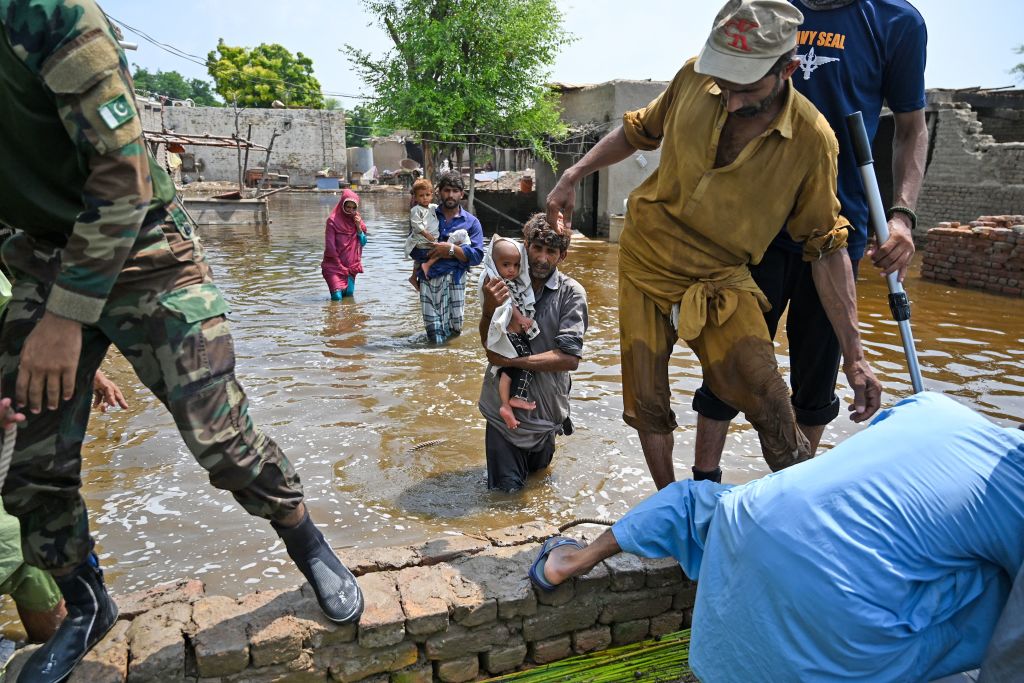
The first glimmers of progress in the loss and damage debate happened last year, at climate talks in Glasgow. Scotland became the first government in the developed world to recognize loss and damage and pledged about $2.3 million toward funding it. Activists were buoyed by what they called the “de-tabooing” of the issue, but ultimately, COP26 ended with disappointment for the Global South, with only a meager agreement for a “dialogue” on the issue.
The U.S. and other rich nations’ opposition remained so strong that they initially tried to prevent the topic from making it onto the official COP27 agenda. But escalating pressure from activists and developing countries, as well as devastating floods that left a third of Pakistan, a country that has contributed less than 1 percent of carbon emissions historically, under water this summer, brought renewed attention to the issue.
After receiving assurances that the U.S., European Union, and other developed nations wouldn’t be held liable, the issue eventually made it onto the formal agenda for the first time ever. It was a historic move and one that resulted in “cautious optimism,” Michai Robertson, a negotiator for the Alliance of Small Island States, told Grist.
To understand what followed over the next two weeks, it’s crucial to understand the various political factions and their positions in climate negotiations. Countries at COP27 largely fall into one of two groups: developed and developing, as defined in 1992, three years before the first COP conference. On one side are developed countries in the G7, which include the wealthiest nations and largest historical polluters. And on the other side are developing nations, which are further grouped into the G77, Small Island Developing States, Least Developed Countries, the Independent Alliance of Latin America and the Caribbean, and the Alliance of Small Island States, among others.
But these divisions based on the economic stature of countries in the 1990s has become a growing source of tension in climate negotiations. Countries in the G7 are largely responsible for historical emissions, making up nearly 80 percent of the total carbon emissions between 1850 and 2015. In the last few decades though, growing economies in the developing world such as China and India have seen their emissions increase dramatically. China is now the largest annual emitter, followed by the U.S. and India. These shifts have led to finger pointing and blame games during climate negotiations, with the G7 trying to rope China and other wealthy countries like Singapore, South Korea, and Saudi Arabia into paying for climate action.
During the first week of COP27, the U.S. and other G7 nations seemed firmly entrenched in their opposition to a direct funding scheme for loss and damage. Instead, they emphasized the need for a broad array of “funding arrangements,” from considering the use of existing climate funds to early-warning systems for disaster risk reduction. They proposed setting a deadline for 2024 for discussing those arrangements, but didn’t promise any specific outcomes at the end. Meanwhile, the G77, China, and other developing countries, as well as nonprofits, called for a specific “mechanism” or “facility” or “fund” that would begin disbursing money in two years.
By the middle of the second week, with each camp digging in its heels, tensions were running high. The outgoing chair of the Alliance of Small Island States, Molwyn Joseph, told the press that establishing a loss and damage fund at COP27 was a “red line” for the group and that they were discussing walking away from negotiations if their demands weren’t met. Meanwhile, advocacy groups began observing attempts to break up the unity between the various negotiating blocs representing the developing world.
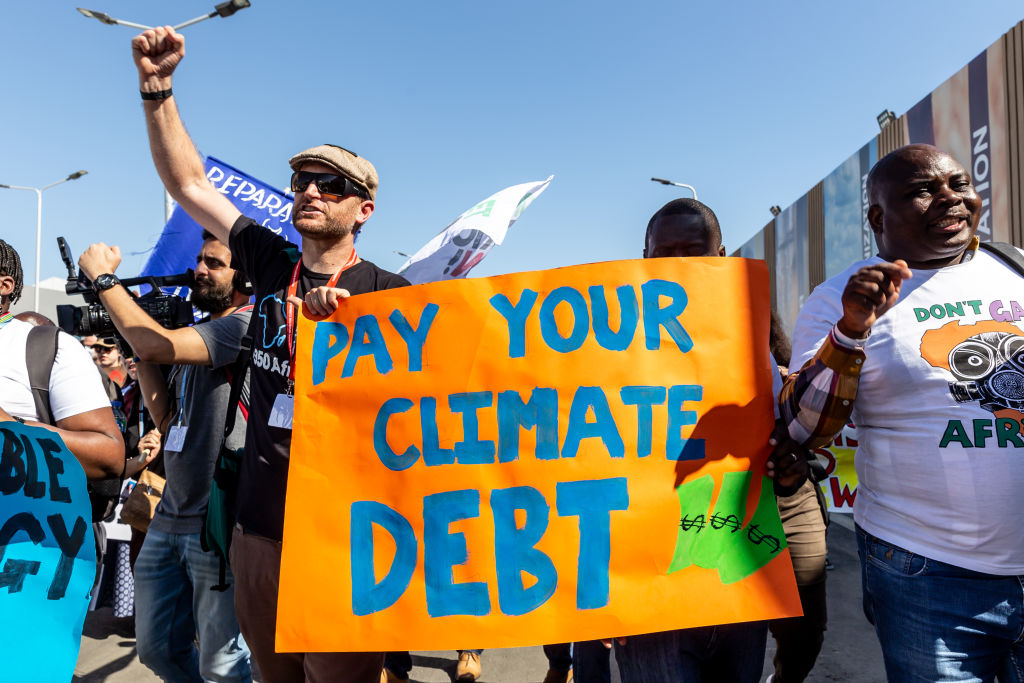
Led by Germany, the G7 in partnership with a group of climate-vulnerable countries had proposed an insurance initiative as one way to address loss and damage. The countries committed more than $200 million toward subsidizing insurance programs for developing countries and setting up other social security schemes. It was a move that most advocates saw as a distraction from the call for a separate fund for loss and damage. The U.S. and European Union also began indicating that they wanted a broad pool of donors to contribute to loss and damage funding, not just developed countries.
“They are looking for any possible way to break up the bloc,” Brandon Wu, head of policy and campaigns at the social justice advocacy group ActionAid USA, told Grist. “One of those tactics is trying to say countries like China and India are different from some of the most vulnerable countries and they need to be contributors to this fund.”
But the developing nations stayed unified. China, which already contributes to climate financing through a separate $3.1 billion South-South Climate Cooperation Fund and other channels, said it would be willing to contribute toward compensation for loss and damage on a voluntary basis. Then on Thursday, in what appeared to be an attempt to show a unified front just one day before the official close of COP27, leaders from the G77, Alliance of Latin America and the Caribbean, Alliance of Small Island States, and Least Developed Countries held an “emergency press conference” to reiterate the need for a fund. “We are seeking to find common ground even at this late hour,” said Sherry Rehman, Pakistan’s climate minister, on behalf of the G77 and China. “The clock is ticking.”
The turning point came just a few hours later. With little warning, at a late night meeting of negotiators, the Vice President of the European Union, Frans Timmermans, floated an “offer” in the “spirit of trying to find compromises.” The EU would support the demand for setting up a separate loss and damage fund “for the most vulnerable countries.” It would receive funding from a “broad donor base” and would be set up at COP27. The proposal mostly capitulated on the demand for a fund set up immediately, but expanded the contributor pool to include emerging economies and wealthier developing countries. Having held firm against any sort of fund, the U.S. was reportedly blindsided.
“It actually just goes to show how blatant the U.S.’ obstruction is,” said Rachel Rose Jackson, director of climate research and policy at the nonprofit Corporate Accountability. “[The EU and U.S.] work hand-in-hand to advance a shared strategy. When they get to the point when they’re ready to publicly distance themselves from the U.S., you know they’re doing dirty.”
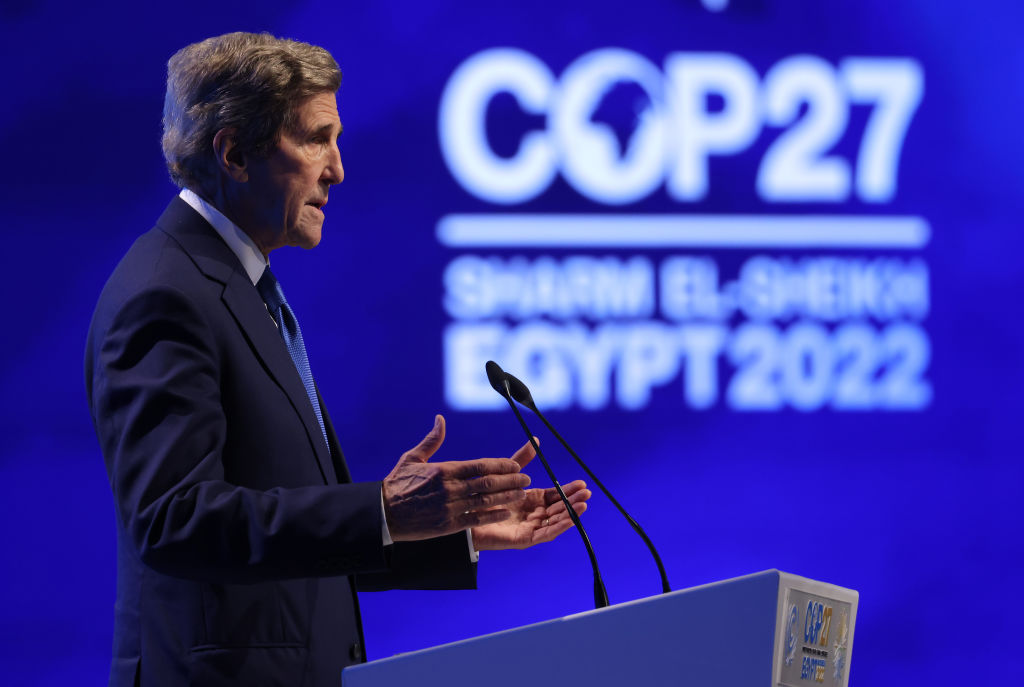
The EU proposal broke the logjam. With the U.S. isolated in its opposition to the fund, it quickly reversed its position. In about 24 hours, the COP27 presidency, headed by Egypt’s foreign minister Sameh Shoukry, released text that explicitly called for a new, separate fund to support loss and damage costs in vulnerable countries.
The fund is a massive step forward, but the agreement in Egypt punted on many thorny issues. For one, the pact is neutral on whether countries like China, which are classified as “developing” but are now major carbon emitters, will pay into the fund. The text also opens up questions about which countries will be eligible for appropriations from the fund. There are no concrete dollar amounts for funding. As a result, the fund is essentially an empty bank account at the moment. The battle over fund donors and recipients will play out over the coming year once a transitional committee is appointed.
“There’s hard work ahead to get this fund operational and ensure it serves the needs of communities hit hardest by climate extremes and slow-onset disasters,” Rachel Cleetus, a policy director and lead economist at the nonprofit Union of Concerned Scientists, said in a statement. “But today, fittingly, at this ‘Africa COP,’ the most important and long-awaited first step on that path has been secured.”
